DI-8-ANEPPS
Synonym(s):Di-8-ANEPPS
- CAS NO.:157134-53-7
- Empirical Formula: C36H52N2O3S
- Molecular Weight: 592.87
- MDL number: MFCD03453608
- SAFETY DATA SHEET (SDS)
- Update Date: 2025-01-27 09:38:02

What is DI-8-ANEPPS?
Description
Di-8-ANEPPS is a potentiometric fluorescent dye that can be used to noninvasively measure transmembrane voltage. It is not fluorescent in water, but when bound to the lipid bilayer, becomes strongly fluorescent (ex/em max = ~467/631 nm). The fluorescence intensity of di-8-ANEPPS varies proportionally to changes in transmembrane voltage. This dye is most suitable for measuring larger changes in membrane voltage, such as the onset of induced membrane voltage in nonexcitable cells exposed to external electric fields or action potentials in excitable cells. Since di-8-ANEPPS stains the membrane, it can also be used simply as a cell membrane marker.
The Uses of DI-8-ANEPPS
Di-8-ANEPPS is a potentiometric fluorescent dye that can be used to noninvasively measure transmembrane voltage. It is not fluorescent in water, but when bound to the lipid bilayer, becomes strongly fluorescent (ex/em max = ~467/631 nm). The fluorescence intensity of di-8-ANEPPS varies proportionally to changes in transmembrane voltage. This dye is most suitable for measuring larger changes in membrane voltage, such as the onset of induced membrane voltage in nonexcitable cells exposed to external electric fields or action potentials in excitable cells. Since di-8-ANEPPS stains the membrane, it can also be used simply as a cell membrane marker.
The Uses of DI-8-ANEPPS
Di-8-ANEPPS is a fast-responding membrane potential dye. It is more suitable for long-term membrane potential studies than di-4-ANEPPS (sc-214872) because of its better retention in the outer leaflet of plasma membranes. This dye is weakly fluorescent in aqueous media, and becomes strongly fluorescent upon binding to lipophilic environments (such as membranes). Di-8-ANEPPS is less susceptible for cellular internalization due to the sulfonate group it possesses.Dyes and metabolites.
What are the applications of Application
Di-8-ANEPPS is a fast responding membrane potential dye with superior retention in the outer leaflet of plasma membranes.
Properties of DI-8-ANEPPS
| Melting point: | >200℃ |
| storage temp. | 2-8°C |
| solubility | DMSO: soluble |
| form | powder |
| color | orange to red |
| λmax | 498 nm |
| Biological Applications | Measuring membrane potential |
Safety information for DI-8-ANEPPS
Computed Descriptors for DI-8-ANEPPS
New Products
Methyl (R)-1-Boc-4,4-difluoropyrrolidine-2-carboxylate 2,2-Difluoropropylamine hydrochloride tert-butyl 3-bromoazetidine-1-carboxylate (R)-1-Boc-3-hydroxypyrrolidine DIFLUOROACETIC ANHYDRIDE 2,2-Difluoropropionic acid Diallylamine, 99% Calcium hydroxide, 95% Aluminum oxide, basic 2-Bromophenylacetonitrile, 97% L-tert-Leucine,97% N-Hydroxy-2-methylpropanimidamide 4-(3,4-Dichlorophenyl)-3,4-Dihydro-N-Methyl-1-(2H)-Naphthalenimine (Schiff Base) 2-AMINO-3,5-DIBROMO BENZALDEHYDE [ADBA] L-Glutamic Acid Dimethyl Ester Hcl 10-Methoxy-5H-dibenz[b,f]azepine 5-Cyanophthalide N, N-Carbonyldiimidazole (CDI) Dibenzoyl Peroxide Titanium Dioxide 2-(Methylthio) Benzonitrile Sodium Acetate Anhydrous Allopurinol 1,5-DibromopentaneRelated products of tetrahydrofuran

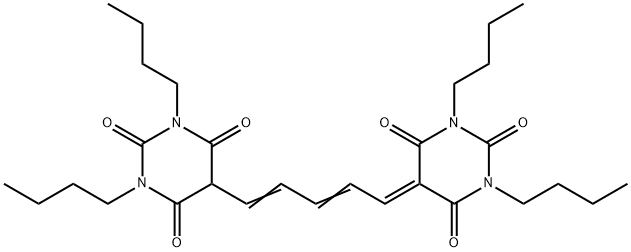
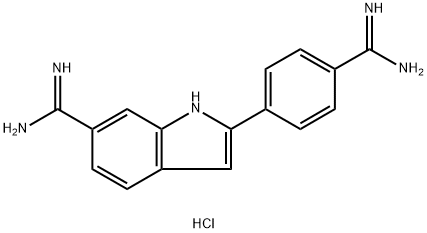
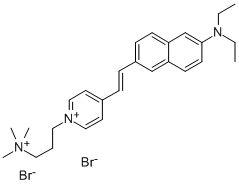

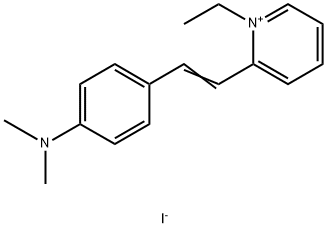
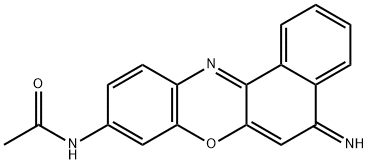

You may like
-
![4-(2-[6-(Dioctylamino)-2-naphthalenyl]ethenyl)-1-(3-sulfopropyl)pyridinium inner salt CAS 157134-53-7](https://img.chemicalbook.in//Content/image/CP5.jpg) 4-(2-[6-(Dioctylamino)-2-naphthalenyl]ethenyl)-1-(3-sulfopropyl)pyridinium inner salt CAS 157134-53-7View Details
4-(2-[6-(Dioctylamino)-2-naphthalenyl]ethenyl)-1-(3-sulfopropyl)pyridinium inner salt CAS 157134-53-7View Details
157134-53-7 -
![Cis-2-(Bromomethyl)-2-(2,4-Dichlorophenyl)-1,3-Dioxolane-4-Ylmethyl Benzoate [CBB] 61397-56-6 99%](https://img.chemicalbook.in//Content/image/CP5.jpg) Cis-2-(Bromomethyl)-2-(2,4-Dichlorophenyl)-1,3-Dioxolane-4-Ylmethyl Benzoate [CBB] 61397-56-6 99%View Details
Cis-2-(Bromomethyl)-2-(2,4-Dichlorophenyl)-1,3-Dioxolane-4-Ylmethyl Benzoate [CBB] 61397-56-6 99%View Details
61397-56-6 -
 287930-77-2 / 142569-70-8 99%View Details
287930-77-2 / 142569-70-8 99%View Details
287930-77-2 / 142569-70-8 -
 Ethyl-2-Chloroacetoacetate 609-15-4View Details
Ethyl-2-Chloroacetoacetate 609-15-4View Details
609-15-4 -
 CIS- BROMO BENZOATEView Details
CIS- BROMO BENZOATEView Details
61397-56-6 -
 609-15-4View Details
609-15-4View Details
609-15-4 -
![1-(6-Methylpyridin-3-Yl)-2-[4-(Methylsulfonyl)Phenyl]Ethanone [Ketosulfone] 99%](https://img.chemicalbook.in//Content/image/CP5.jpg) 1-(6-Methylpyridin-3-Yl)-2-[4-(Methylsulfonyl)Phenyl]Ethanone [Ketosulfone] 99%View Details
1-(6-Methylpyridin-3-Yl)-2-[4-(Methylsulfonyl)Phenyl]Ethanone [Ketosulfone] 99%View Details
221615-75-4 -
 27143-07-3View Details
27143-07-3View Details
27143-07-3
